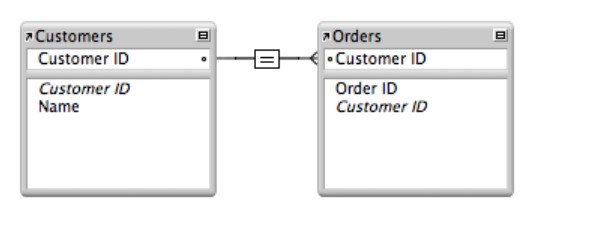Relationship
One-to-one relationship
In a one-to-one relationship, one record in a table is associated with one and only one record in another table. For example, in a school database, each student has only one student ID, and each student ID is assigned to only one person.
One-to-many relationship
In a one-to-many relationship, one record in a table can be associated with one or more records in another table. For example, each customer can have many sales orders.

Many-to-many relationship
A many-to-many relationship occurs when multiple records in a table are associated with multiple records in another table. For example, a many-to-many relationship exists between customers and products: customers can purchase various products, and products can be purchased by many customers.
Participation
Total participation (Compulsory, Mandatory)
for humans, “hasBiologicalFather” is a many-to-one relationship from Person to Man with total participation.
Consider two entities EMPLOYEE and DEPARTMENT related with the help of relationship WORKS_FOR.
If a company policy states that every employee must work for a department, then an employee entity can exist only if it participates in at least one WORKS_FOR relationship instance. Thus, the participation of EMPLOYEE in WORKS_FOR is called total participation, meaning that every entity in the total set of employee entities must be related to a department entity via WORKS_FOR.
Partial participation (Opitional)
Consider two entities EMPLOYEE and DEPARTMENT related with the help of relationship MANAGES.
Here, not all employees are expected to manage a department, so the participation of EMPLOYEE in the MANAGES relationship type is partial.
Reference
- https://fmhelp.filemaker.com/help/16/fmp/en/index.html#page/FMP_Help%2Fone-to-many-relationships.html%23
- https://www.youtube.com/watch?v=W7SVMKIwOzs
- http://www.ques10.com/p/3849/explain-the-terms-total-participation-and-partia-2/